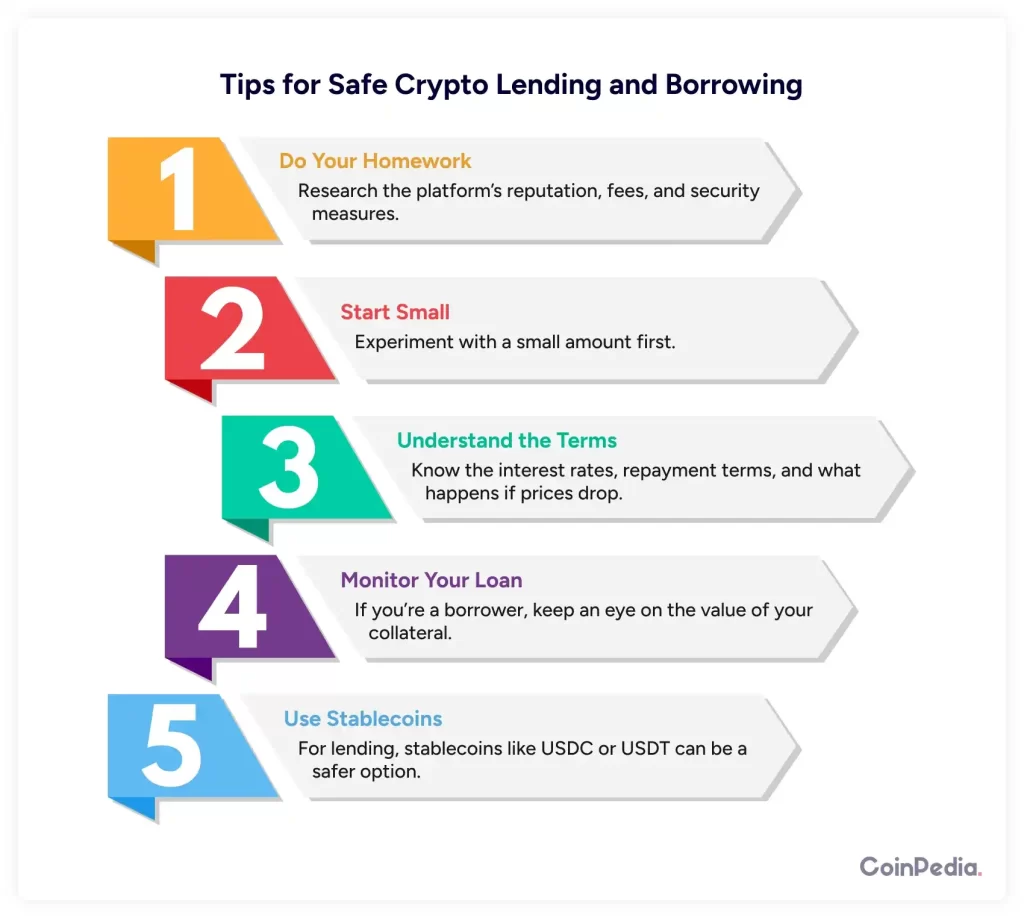Unlocking the Potential of Your Crypto: A Dive into Crypto Lending and Borrowing
Ever wonder if there’s more you possibly can do along with your cryptocurrency than simply letting it idle in your digital wallet? Well, there’s! Welcome to the world of crypto lending and borrowing—a digital twist on traditional loans. Curious about the way it functions? You’ve come to the correct spot.
Understanding Crypto Lending and Borrowing
At its essence, crypto lending involves offering your cryptocurrency to others in return for interest. Conversely, borrowing means securing a loan by utilizing your cryptocurrency as collateral. Imagine it as a high-tech version of asking a neighbor for a cup of sugar—except here, it’s Bitcoin or Ethereum on the road.
Still with me? Awesome! Let’s dive somewhat deeper.
Why Opt for Crypto Lending or Borrowing?
You is likely to be asking: Why undergo this process as an alternative of sticking with conventional loans or simply holding onto your cryptocurrency?
Here’s why:
For Lenders:
- Earn Passive Income: Rather than letting your crypto sit idle, it may well generate interest.
- Compound Gains: If you’re already holding Bitcoin, lending it means you possibly can earn much more crypto on top of it.
For Borrowers:
- Access Liquidity Without Selling: Owning Ethereum and watching its value rise, but needing money? Borrowing permits you to tap into its value without parting with it.
- Lower Interest Rates: Often, crypto loans include lower rates of interest in comparison with bank cards or personal loans.
How Does the Process Work?
Step 1: The Platform
Everything kicks off on a crypto lending platform. Popular names include Aave, Compound, and BlockFi, which act as bridges between lenders and borrowers.
Step 2: Collateral
Borrowers have to supply collateral as a type of guarantee. If repayment fails, the platform retains the collateral, which is normally valued higher than the loan to account for crypto’s price volatility.
For instance:
- You want to borrow $1,000 in USDC (a stablecoin).
- The platform might require $1,500 in Bitcoin as collateral.
Step 3: Interest Rates
Interest rates fluctuate based on supply and demand. High demand for borrowing a specific coin means higher rates, while low demand pushes rates down.
Step 4: Loan Repayment
Once the borrower repays the loan, their collateral is returned. If they default, the platform liquidates the collateral to cover the debt.
Easy to date? Let’s use some real-life scenarios to further illustrate.
Example Time: Meet Anna and John
Anna the Lender
Anna has 1 Bitcoin and no intention to sell it soon. Instead, she lends it out on a platform offering a 5% annual rate of interest, earning her 0.05 BTC in a 12 months. Not too shabby for minimal effort!
John the Borrower
John needs $10,000 to expand his online business. He owns 2 Ethereum but doesn’t wish to sell them, believing their value will rise. Using his 2 ETH (price $12,000) as collateral, he borrows $10,000 in stablecoins at an 8% rate of interest.
- If John repays in time, he retrieves his ETH.
- Failure to repay leads the platform to sell some or all of his ETH to get well the $10,000.
See how it really works? It’s all about leveraging your assets smartly.
Risks to Consider
Crypto lending and borrowing include risks. Here’s what you should concentrate on:
- Price Volatility: Crypto values can shift rapidly. If collateral drops significantly, platforms might liquidate it—a scenario often known as a margin call.
Example: John’s ETH value dips to $8,000. It’s not sufficient to cover his $10,000 loan, prompting the platform to sell a part of his ETH to bridge the gap. - Platform Risk: Not every platform is equal. Some may face technical issues and even collapse. Stick with reputable platforms.
- Smart Contract Bugs: Many platforms depend on smart contracts—automated programs enforcing loan terms. Bugs in these contracts can result in fund losses.
- Regulatory Risks: As governments worldwide develop crypto regulations, changes could impact platform operations.
Tips for Safe Crypto Lending and Borrowing

- Do Your Homework: Research a platform’s popularity, fees, and security. Check user reviews.
- Start Small: If you’re recent, take it slow. Begin with a small amount to check the waters.
- Understand the Terms: Read the positive print. Know the rates of interest, repayment terms, and implications of price drops.
- Monitor Your Loan: As a borrower, track your collateral’s value. Be able to add more if mandatory.
- Use Stablecoins: For lending, stablecoins like USDC or USDT may be safer, as their values remain relatively regular.
The Future of Crypto Lending and Borrowing
This sector is rapidly expanding. More platforms are emerging, and traditional banks are taking notice. Why? Because crypto lending is fast, global, and doesn’t demand an ideal credit rating.
Decentralized Finance (DeFi)
Platforms like Aave and Compound are a part of DeFi—a movement to interchange traditional financial services with blockchain-based solutions. No middlemen, just smart contracts, which suggests lower fees and greater transparency.
Centralized Platforms
Then there are centralized platforms like BlockFi, Celsius, or Nexo. These operate more like traditional banks but with a crypto twist, designed to be user-friendly for the less tech-savvy.
What’s Next?
Crypto lending and borrowing may appear daunting initially, nevertheless it’s essentially one other avenue to make your assets work harder. Whether you’re a lender aiming for passive income or a borrower needing quick money, opportunities abound.
Remember: at all times balance the risks with the rewards. Start small, stay informed, and never invest greater than you possibly can afford to lose. When approached properly, crypto lending and borrowing generally is a gateway to financial freedom.
